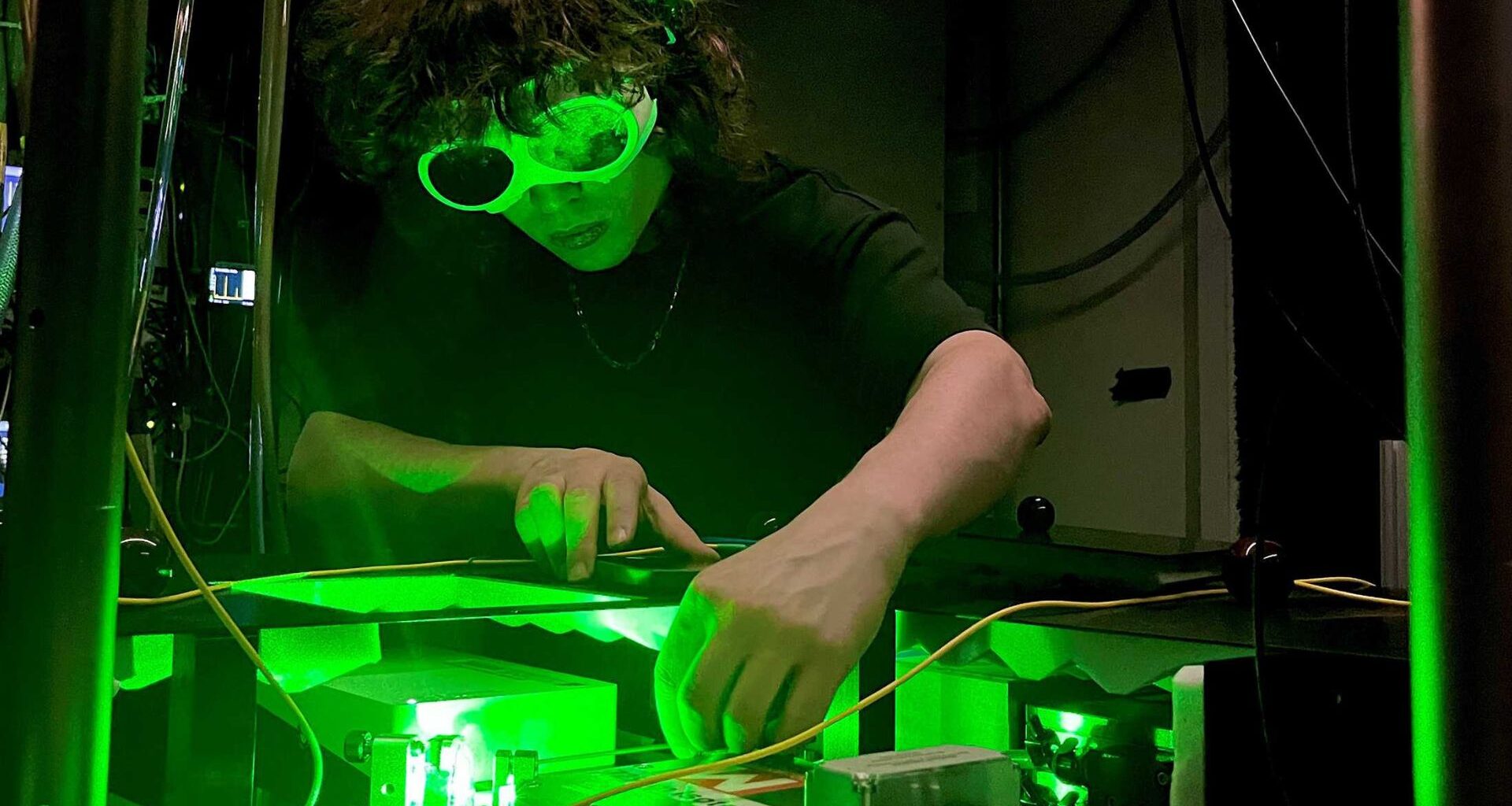Scientists are using “trapped ions” in highly precise experiments to search for a new, fifth force of nature that could help explain elusive dark matter.
The invisible dark matter is one of the universe’s biggest mysteries, and its existence is confirmed only by the gravitational effects it produces.
The Standard Model of physics has long been the best guide, precisely describing the fundamental building blocks of matter and the forces that govern them.
Yet it can’t explain everything.
Hunt for the fifth force
Physicists believe that most of the universe’s mass comes from an unknown form of matter.
And to explain it, experts have theoretically suggested the possibility of a new, fifth force of nature. The four established fundamental forces are gravity, electromagnetism, the strong nuclear force, and the weak nuclear force.
It is assumed that an undiscovered “fifth force” likely exists between neutrons in an atom’s nucleus and the electrons orbiting it. This hypothetical force, if real, would be transmitted by a new, as-yet-unseen particle.
For a long time, massive particle accelerators like those at CERN have been used to search for new particles.
However, the ETH Zurich team is taking a different approach.
“As atomic physicists, we can measure the atom with extremely high precision,” Therefore, the idea is to search for this new force between the neutron and the electron using precision atomic spectroscopy,” stated Professor Diana Prado Lopes Aude Craik from ETH Zurich.
If this new force exists, its strength would depend on the number of neutrons in an atomic nucleus.
The team experimented with isotopes to pinpoint this hypothetical force.
Isotopes are like siblings of the same atom, identical in every way except for the number of neutrons.
Ion trap experiment
The existence of this new force would mean electrons in various isotopes experience slightly different total forces, resulting in tiny energy level shifts.
“To determine these energy shifts, we measure the frequency of the light emitted when our isotopes transition between two energy levels,” explained Aude Craik.
This requires an ingenious tool: an ion trap. Electromagnetic fields hold a single charged isotope perfectly still, while a laser excites it.
The Zurich team used five stable, singly-charged calcium isotopes, each with 20 protons but varying from 20 to 28 neutrons.
 Depiction of a hypothetical force between neutron (blue) and electron (gray), mediated by the force-carrying particle φ (green). It could be detected by measurements on isotopes – types of the same atom that have the same number of protons (red) in the nucleus, but a different number of neutrons. (Graphic: PTB)
Depiction of a hypothetical force between neutron (blue) and electron (gray), mediated by the force-carrying particle φ (green). It could be detected by measurements on isotopes – types of the same atom that have the same number of protons (red) in the nucleus, but a different number of neutrons. (Graphic: PTB)
They achieved an accuracy of 100 millihertz – 100 times more precise than previous measurements on energy shifts.
How? Specifically, the ETH Zurich team used an ion trap to hold and measure two singly-charged calcium isotopes simultaneously.
But the hunt didn’t stop there. Complementary experiments in Germany used highly charged calcium ions, while another group precisely measured the nuclear mass ratios of these isotopes.
The findings showed that known nuclear effects could only explain part of the observed deviations. Could it be the new force?
Not so fast! Another potential explanation is nuclear polarization – a little-understood deformation of the atomic nucleus caused by electrons.
“We can’t say that we’ve discovered new physics here. However, we know how strong the new force can be at most because we would have seen it otherwise in our measurements, even with the uncertainties,” Aude Craik added.
The current highly precise measurements allow scientists to limit a hypothetical particle’s possible properties (mass and charge) that would transmit this force.
The researchers continue their work, aiming for even greater precision and expanding their analysis to a three-dimensional model to overcome theoretical challenges.
Will they find the elusive fifth force? Only time and continued precision will tell.
The findings were published in the journal Physical Review Letters.
